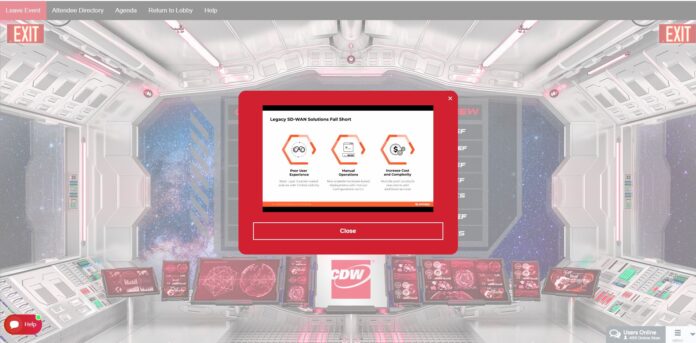The SD-WAN marketplace is very crowded, says Fredrik Zeeck, Channel Business Manager, Palo Alto Networks, speaking at CDW’s BTEX 2020 virtual event. “Twelve months ago, everybody was talking about SD-WAN, but 12-15 months from today, the SD-WAN moniker will probably fall by the wayside, and everyone will be talking about SASE, as we’re trying to lean into the secure access service edge.”
Palto Alto Networks and CloudGenix have been working together for years on a product that looked and felt like SASE, which culminated in the acquisition of CloudGenix by Palo Alto Networks in 2020. “This has put us in the crosshairs of becoming the world’s first SASE product,” says Zeeck.
Prior to the acquisition, the CloudGenix solution was in use in just about every industry vertical, from banking to retail to manufacturing. “CloudGenix has had a really great experience with just about everyone; 45 of the current Fortune 1000 are happy CloudGenix customers” says Zeeck, highlighting Bank of America, Chipotle, Autodesk, Captrust and Columbia as major customers where CloudGenix added value.
“The ability to get 192 responses that were all positive [to Gartner’s PeerInsights Customers’ Choice] is a testament to how we run the business and how we address problems throughout the entire customer infrastructure.”
How next-generation automation delivers ROI
“What we can stand on as CloudGenix and Palo Alto Networks is the ability to deploy the network faster,” says Zeeck. “The ability to roll out those sites, reduce the number of complexities at the branch, thanks to our ability to monitor application performance. When you’re looking at a one-stop shop to reduce deployment problems, operational issues and management problems, as well as trying to reduce or reallocate cost, those are wonderful things to have.”
Zeeck says that CloudGenix distinguishes itself by being at the Layer 7 level, doing application and flow-based routing, which is going to cut out CLI complexity, reduce cost and allows for less branch complexity.
3 areas where legacy SD-WAN solutions fall short
Poor user experience: Basic Layer 3 packet-based router infrastructure with limited visibility
Manual operations: Non-scalable, hardware-based deployments with manual configurations via CLI
Increased cost and complexity: Multiple point products required to add additional services
“Layer 3 metrics – loss, jitter and latency – can tell you if a branch is up or down, or if they’re having trouble passing traffic, but what they can’t tell you is what your applications at that branch are doing, or how your VoIP traffic is performing,” says Zeeck. “If you can’t see it, you can’t measure it. And if you can’t measure it, you can’t secure it.”
What is SASE?
According to Palo Alto Networks, SASE is the convergence of wide area networking (WAN) and network security models like CASB, FWaaS and zero trust into a single, cloud-delivered service model.
“Application-defined visibility is the secret sauce for what we’re bringing to the table,” says Zeeck. “Maintaining the features and functionality while reducing the complexity and really delivering that autonomous SD-WAN service that makes things easier to roll out from a cloud-delivered branch; those are the key differentiators.”
“At the core, SD-WAN is about prioritizing your traffic and prioritizing applications and the compliance around those things. Stepping further beyond that, we’re able to provide the single pane of glass that will drill down to the application performance layer at the branch to see a graphical depiction of what those applications are doing.”
Be sure to bookmark this page for more coverage of BTEX 2020.







